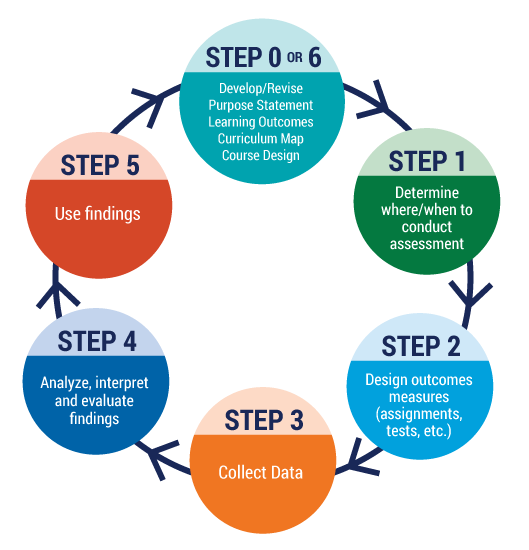DPE How-To Guide
Degree Program Expectations
How-to Guide
The resources provided on this website will assist you in completing the Degree Program Expectations, including the six steps of the assessment process. The ideas and suggestions for completing the steps are intended to provide useful information for faculty and department chairs. Meaningful assessment practices are anything but a one-size-fits-all approach. For assessment to be useful, it needs to be tailored to fit each academic unit and program. Since each academic department or school and its degree programs differ in terms of size, approach, and outlook, it is important to ensure that the assessment approach matches the needs of the program, the faculty, and students. Staff from the Office of Curriculum & Assessment are available to discuss any thoughts or ideas to help programs build a learning outcomes assessment approach that fulfills NAU’s assessment requirements and meets the needs of your faculty and students.
The Cyclical Nature of Learning Outcomes Assessment and NAU’s Six Step Assessment Cycle
The primary goal of program learning outcomes assessment at NAU is to assess how well the program’s students have achieved the program’s learning outcomes. Obtaining this information leads to identifying student learning strengths and areas for continued improvement. Due to this approach, the process of “curriculum and assessment” is cyclical in nature. It is an ongoing process that should evolve and change to inform directions for a program’s curriculum as programs and students evolve and change. Our goal is to ensure our programs maintain student learning strengths, and that actions taken result in the improvements sought by the program’s faculty.
There are six steps to NAU’s learning outcomes assessment cycle:

Purpose Statement
- An Overview of the Purpose Statement
- Characteristics of a Purpose Statement
- How to Develop a Purpose Statement
Guide to Degree Program Plan Purpose Statements and Student Learning Outcomes
Strategic Course Design
- Guide to Designing, or Re-designing, a Course
- Consult an Instructional Designer
- Use the “Backward Design” Tutorial
- Use other Instructional Design Tutorials
- Checklist for High-Quality Course Design
- Guide to Creating Assignments Aligned to Course Outcomes
Learning Outcomes
- An Overview of Learning Outcomes
- Characteristics of Learning Outcomes
- How to Develop Learning Outcomes
- How to Begin
- How to Draft & Revise Outcomes
- Degree Program Expectation: Curriculum Design, Curriculum Map/Matrix
- Guide to Degree Program Purpose Statements and Student Learning Outcomes
Systematic Assessment
- An Overview of Assessment at NAU
- Characteristics of Systematic Assessment
- Step 1: Determine where/when to conduct assessment
- Step 2: Design outcome measures (assignments, tests, portfolios, etc.)
- Step 3: Collect data
- Step 4: Analyze and interpret findings